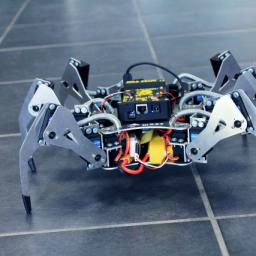
The
debate over LTE-Unlicensed is heating up after the Wi-Fi Alliance asked the Federal Communications Commission to postpone equipment testing that uses unlicensed spectrum until the Wi-Fi industry group can run its own tests to make sure that the technology does not interfere with traditional Wi-Fi. Recently, U.S. carriers Verizon Wireless and T-Mobile US teamed up with major equipment manufacturers Alcatel-Lucent, Ericsson and Qualcomm to write its own letter urging the FCC to oppose the Wi-Fi Alliance's proposal, which could halt Verizon Wireless' plans to begin deploying LTE-U in the 5 GHz band beginning in 2016, as well as T-Mobile US' goal of using the technology in its smartphones by the end of this year.
Companies such as Microsoft and big cable companies support further testing. Microsoft said it worries that the LTE-U signal could "degrade the performance of services delivered over Wi-Fi." Big cable TV and Internet companies are worried that their investments in Wi-Fi hot spots throughout the country could be greatly impacted if there is interference from LTE-U. "Research demonstrates that both LTE-U and LAA would severely decrease the performance of any nearby Wi-Fi network. Widespread deployment of LTE-U or LAA would therefore harm American consumers, schools, and innovators by dramatically reducing the utility of the unlicensed bands for everyone but the companies that already hold licensed spectrum," the NCTA said in its letter to the FCC. "Furthermore, there is already a growing amount of research, such as that published by Google and CableLabs"indicating that Wi-Fi networks will be negatively impacted by the current version of LTE-U technology. The risk to users who depend on Wi-Fi every day for their connectivity needs is too great."

Most people think the quest to electrify rural parts of the US was something that happened in the 1950s, but remote Alaskan villages still depend on flying-in barrels of diesel, priced as high as $10 per gallon, to power generators, with
electricity prices of more than 40 cents per kilowatt hour - and that's after state subsidizes to equalize energy costs. "The last thing people who live in a place known for cold, dark and distance need is higher energy prices."
Clearly, renewable energy would be a great benefit to Alaska's small villages - but there are unique hurdles to deploying it. Solar, for instance, is less useful in the long dark night of the northern winter. And that's when electricity costs, due to home heating, are highest. So what can displace diesel? The Alaskan landscape offers several potential energy sources - wind, tidal or river power, and geothermal energy. The trick, though, is getting the costs down, and then successfully integrating them into remote energy systems, where every time you add a power source to the mix, you also add complexity.
A new generation of water-based research focuses on tapping the energy of tides, waves and undammed river flows. River power has its advantages - a steady flow, able to provide a reliable form of baseline power - but also unique challenges. Perhaps the biggest one is that debris, especially floating logs and tree branches, can clog or damage turbines. One approach being pursued is a compact, doughnut-shaped turbine with relatively short and thin blades. River energy holds great potential. For three months of the summer when rivers are flowing, research suggests that turbines could fully power villages. "That three months, there's enough density in the water coming through, that that could equal or be greater than 12 months of wind power."
See also:
http://pipedot.org/2T1F
Now that Amazon Prime is allowing
offline video playback on iOS and Android devices, Netflix needs a better explanation for why it won't do the same. Previously, Netflix has argued that fast, ubiquitous Wi-Fi access would eventually make offline playback irrelevant. But in 2015, on-the-go users still struggle with getting connected, whether it's on a plane with Wi-Fi that's too slow, or in a car where a few hours of streaming on mobile broadband can burn through your data cap.
Unfortunately, Netflix's new excuse is even worse. Speaking to Gizmodo, Netflix Chief Product Officer Neil Hunt argued that
offline playback is just too complex for people to handle. He described this as the "Paradox of Choice," explaining that when you give people too many options, they end up not choosing anything at all. Netflix apparently believes offline playback would result in this sort of paralysis. In lieu of crippling users with choice, Hunt said Netflix could install local media servers on airplanes, trains, or hotels, so users can stream without an Internet connection. Can Netflix really install its entire catalog in local servers on every means of public transport? Besides which, Netflix is still talking about things it would like to do in theory, while Amazon is providing a service that's actually useful right now.
Since 2009, Google self-driving cars have been in 16 crashes, mostly fender-benders. Google claims a human was at fault in every single case. While quick to blame human drivers and even to label them as "idiotic" Google admits the need for "smoothing out" the relationship between the car's software and humans. Google cars regularly take quick, evasive maneuvers or exercise caution in ways that are both cautious, but also out of step with the other vehicles on the road, clashing with actual human behavior.
One Google car, in a test in 2009,
couldn't get through a four-way stop because its sensors kept waiting for other (human) drivers to stop completely and let it go. The human drivers kept inching forward - paralyzing Google's robot. Humans and machines, it seems, are an imperfect mix. A 2012 insurance industry study that surprised researchers found that cars with lane departure warning systems experienced a slightly higher crash rate than cars without them. That highlights a clash between the way humans actually behave and how the cars wrongly interpret that behavior.
On a recent outing with New York Times journalists, the Google driverless car took two evasive maneuvers that simultaneously displayed how the car errs on the cautious side, but also how jarring that experience can be. In one maneuver, it swerved sharply in a residential neighborhood to avoid a car that was poorly parked. Then as it approached a red light the laser system sensed that a vehicle coming the other direction was approaching the red light at higher-than-safe speeds. The Google car immediately jerked to the right in case it had to avoid a collision. In the end, the oncoming car did stop well in time.

A few years ago, Google tested a new kind of "native" ad in Gmail that sat at the top of the inbox and
mostly looked like a regular email. They appear both in the mobile versions of Gmail and on the web. Now, Google is opening up these ads to all advertisers, to purchase directly from AdWords. Advertisers will be able to use the standard AdWords targeting options and work from several templates to build their own native Gmail ads that can feature single images, videos, forms, phone numbers and call-to-action buttons.
What's interesting is that these ads are made for forwarding, too, with a "forward" and "Save to Inbox" link underneath all of them. When you click on "Save to Inbox," the ad will move into your inbox and you can then treat it just like any other regular email. Google says it will continue to give users the ability to control which types of ads they see (and you can always opt out of interest-based ads, too). Google doesn't show ads in the inboxes of Google Apps for Work subscribers.

Erle Robotics has launched an Indiegogo crowdfunding campaign for what it claims is the "first smart robotic spider powered by Snappy Ubuntu Core". Developers can create apps using the open source Robot Operating System (ROS), and distribute/sell them through Erle Robotics' apps store. The six-legged "spider" weighs just over 2 kilograms (4.4lbs) and has 45 minutes of autonomy. Powering the system is a 900MHz quad-core ARM Cortex-A7 CPU with 1 GB of RAM; the Erle-Spider comes with a
gravity sensor, gyroscope, digital compass, pressure sensor, and temperature sensor. "This robot provides connectivity through Bluetooth, Wi-Fi, 3G and 4G networks, etc. then the people can control it through their mobile phones, joysticks, laptops, tablets, etc. and this can even act as a hot spot for Wi-Fi".
Options include a basic kit for about 250 ($400), and an assembled version for around 420 ($640). But oddly, there doesn't seem to be an option to add two extra legs to convert this "spider" from a hexapod into an actual arachnid.

The gurus behind the popular and respected Linux kernel hardening effort Grsecurity will
stop providing their stable patches to the public. In future, only paying sponsors will get access to stable patches to shore up their kernels' defenses. The test series, unfit for production use, will however continue to be available, to avoid impacting the Gentoo Hardened and Arch Linux communities. The project's
full source code will still be released to the public at large, but non-sponsors will have to pick through every update to find out what's applicable to them.
The whole situation stems from WindRiver, a subsidiary of Intel, which "has been using the grsecurity name all over its marketing material and blog posts to describe their
backported, unsupported, unmaintained version in a version of Linux with other code modifications that haven't been evaluated by us for security impact." After spending several thousand on legal fees, faced with "a huge legal team, the capability to drag out the case for years" and a threat to request "all available sanctions and attorneys' fees" were the lawsuit to proceed against them, Grsecurity decided pursuing the case through the courts was not practical.

Mozilla is relaunching its new
Thimble online code editor, an upgraded tool for teaching and learning web literacy in a simple, hands-on and visual fashion. Thimble is an online code editor that makes it easy to create and publish your own web pages while learning HTML, CSS & JavaScript. Thimble lets users to write and edit HTML, CSS, and JavaScript on the left side of their screen, and watch their code come to life on the right. Learners can start with simple remixes, changing words and images on a page to familiarize themselves with code and build confidence. Learners can also work their way toward creating entire web pages from scratch. Thimble is free and open source.
Linus has been busy toiling away on the next version of the Linux kernel, and now
version 4.2 has finally been released. It brings some goodies worth having. The ChaCha20 stream cipher and the Poly1305 authenticator (see RFC 7539) are supported, and there's a new RSA implementation. The default crypto random number generator API is now DRBG. LinuxPlanet notes that there's support for security module stacking. Linux 4.2 uses CPU execution jitter to help seed its improved random number generator, a feature called "jitter entropy RNG" on the basis that sushi should be called "cold dead fish".
The release of 4.2 comes just a few days after
the 24th birthday of Linux, announced on newsgroup comp.os.minix. It isn't an overstatement to say that the modern world runs on Linux. If you look around you, almost everything is running on Linux -- from your home router to stock exchanges. Thanks to Linux, open source has become a phenomenon that is fast becoming a norm in the enterprise and consumer segments. Fierce competitors like Google, Facebook, Yahoo!, Twitter, Red Hat, SUSE are all working together to make open source software even better.
Traveling around space can be hard and require a lot of fuel, which is part of the reason NASA has a
spacecraft concept that would hitch a free ride on one of the many comets and asteroids speeding around our solar system at 22,000 miles per hour (on the slow end). Comet Hitchhiker, developed at NASA's Jet Propulsion Laboratory, would feature a reusable tether system to replace the need for propellant for entering orbit and landing on objects.
The spacecraft would first cast an extendable tether toward the object and attach itself using a harpoon attached to the tether. Next, it would reel out the tether while applying a brake that harvests energy while the spacecraft accelerates. This allows Comet Hitchhiker to accelerate and slowly match the speed of its ride, and keeping that slight tension on the line harvests energy that is stored on-board for later use, reeling itself down to the surface of the comet or asteroid. A comet hitchhiker spacecraft can obtain
up to ~10 km/s of delta-V by using a carbon nanotube (CNT) tether, reaching the current orbital distance of Pluto (32.6 AU) in just 5.6 years.
 The debate over LTE-Unlicensed is heating up after the Wi-Fi Alliance asked the Federal Communications Commission to postpone equipment testing that uses unlicensed spectrum until the Wi-Fi industry group can run its own tests to make sure that the technology does not interfere with traditional Wi-Fi. Recently, U.S. carriers Verizon Wireless and T-Mobile US teamed up with major equipment manufacturers Alcatel-Lucent, Ericsson and Qualcomm to write its own letter urging the FCC to oppose the Wi-Fi Alliance's proposal, which could halt Verizon Wireless' plans to begin deploying LTE-U in the 5 GHz band beginning in 2016, as well as T-Mobile US' goal of using the technology in its smartphones by the end of this year.
The debate over LTE-Unlicensed is heating up after the Wi-Fi Alliance asked the Federal Communications Commission to postpone equipment testing that uses unlicensed spectrum until the Wi-Fi industry group can run its own tests to make sure that the technology does not interfere with traditional Wi-Fi. Recently, U.S. carriers Verizon Wireless and T-Mobile US teamed up with major equipment manufacturers Alcatel-Lucent, Ericsson and Qualcomm to write its own letter urging the FCC to oppose the Wi-Fi Alliance's proposal, which could halt Verizon Wireless' plans to begin deploying LTE-U in the 5 GHz band beginning in 2016, as well as T-Mobile US' goal of using the technology in its smartphones by the end of this year.




